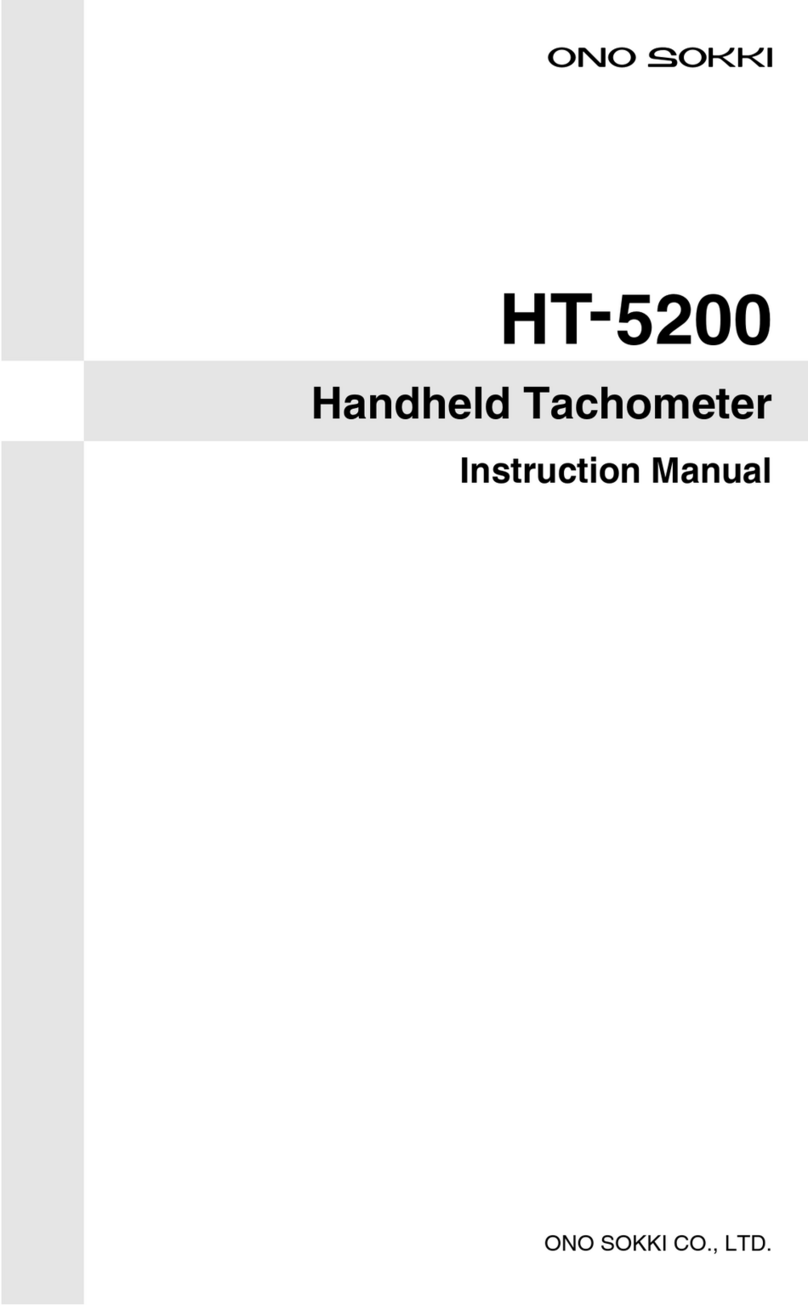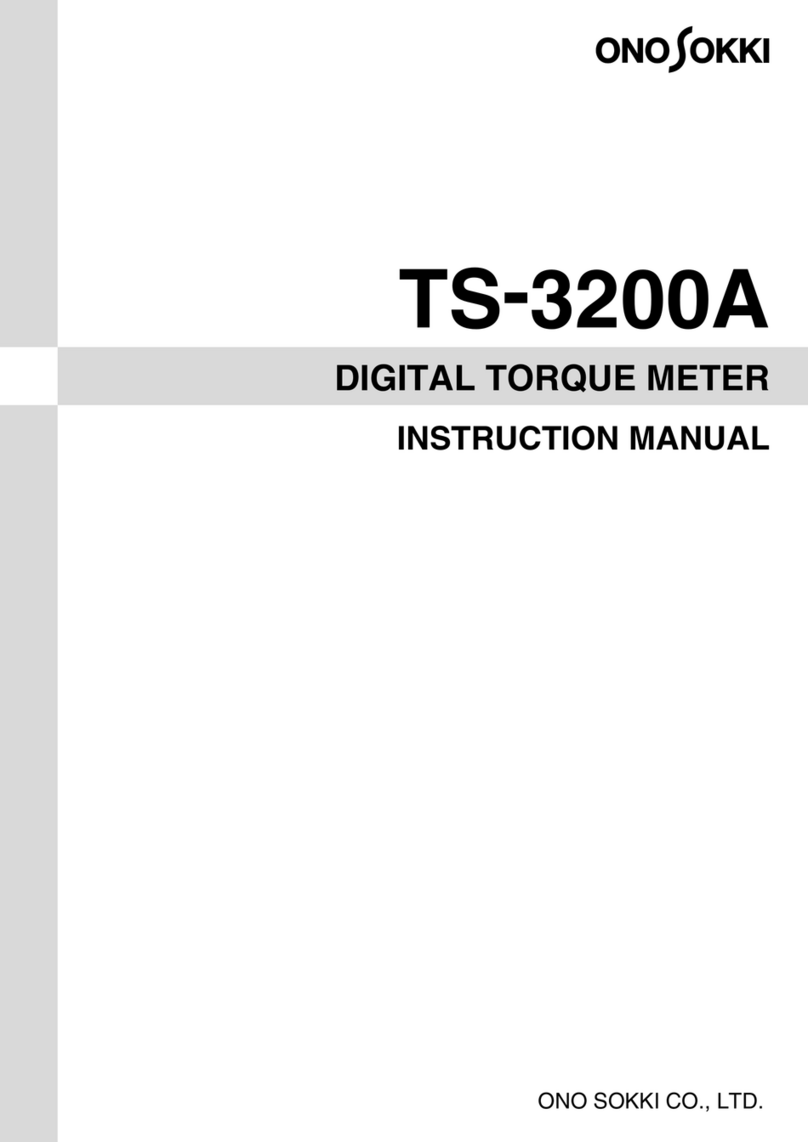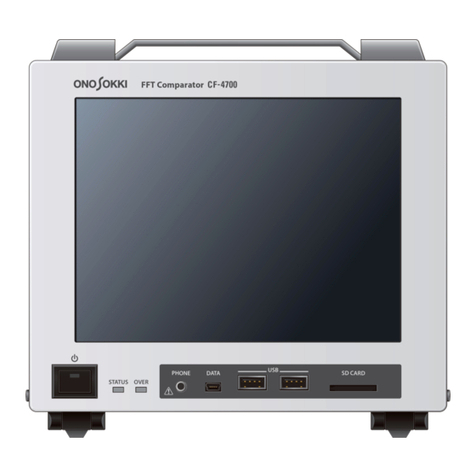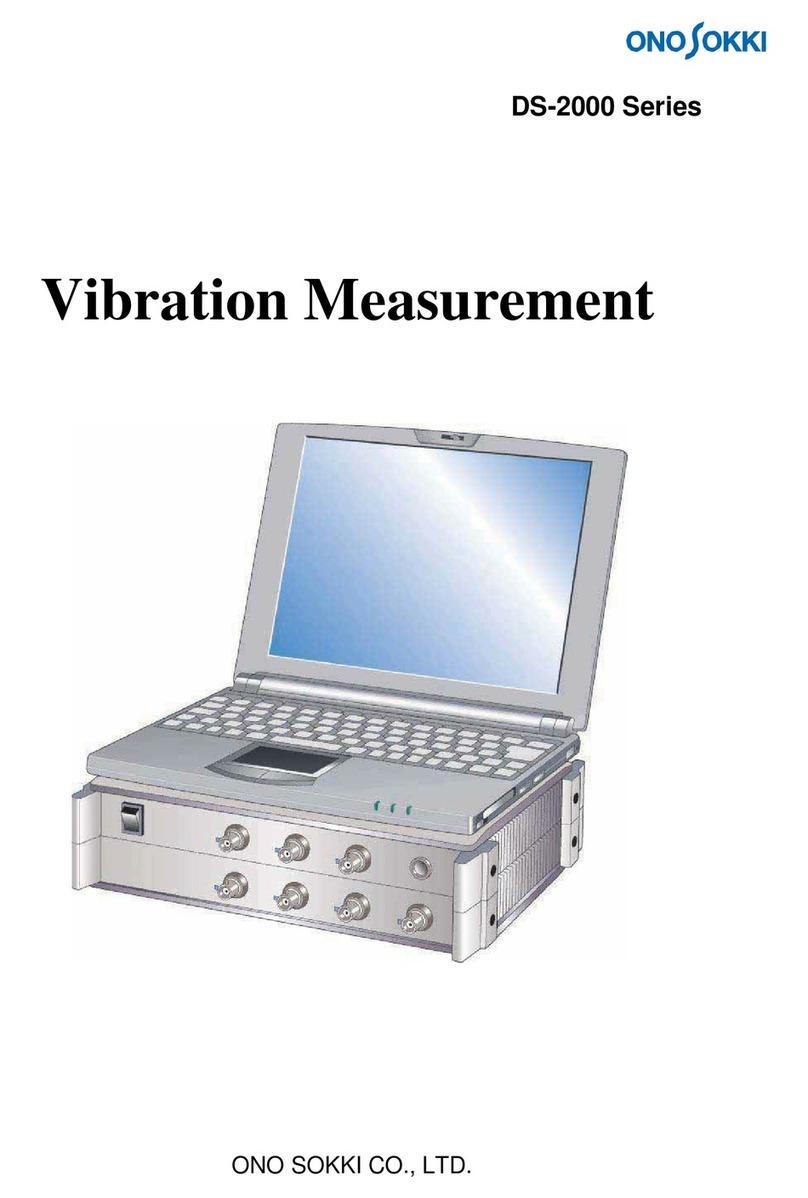
MONITOR-SEL (MON)
[ REVO: SIG ]
CAL-SEL (CAL)
[ 0 V : 1 V ]
When OTHERS
is selected
When IP is selected
MODE
NEXT
MENU
MENU
ANALOG-FS-SET (FS)
[ 1〜99999 ]
SENSOR-SEL (SNS)
[ IP-292 : IP-296 : IP-30 ]
When CNS is selected When ACT is selected
When OFF is selectedWhen ON is selected
INPUT-LEVEL-SEL (LVL)
[ 5V : 0.5V : 0.05V ]
SENSOR-SEL (SNS)
[ OTHER : NP ]
ENVELOPE-SEL (ENV)
[ ON : OFF ]
RECALL
PULSE-SET (PLS)
[ 0.5〜200.0 ]
FILTER-LOWER-SET (LOW)
[ 0〜99998 ]
FILTER-UPPER-SET (UPP)
[ 1〜99999 ]
Setup mode
Measurement mode
Apply &
select item
Set each parameter
Terminate the constant
setup mode
SAMPLE
&
Sensor
selector switch
AVERAGE-SEL (AVE)
[ OFF : 2 : 4 : 8 : 16 ]
FILTER-SEL (FIL )
[ ON : OFF ]
MEASUREMENT-MODE-SEL (MOD)
[ CNS : ACT ]
FREQUENCY-RANGE-SEL (RNG)
[ 2000 : 500 : 250 ]
ALGORITHM-SEL (ALG)
[ TYPE-D : TYPE-E ]
ALGORITHM-SEL (ALG)
[ TYPE-A : TYPE-B ]
BACK-LIGHT (LGT)
[ ON : OFF ]
When SIG is selectedWhen REV is selected
1.Power Switch
①When you slide the power switch upward, the power of the main
unit turns ON.
②When you turn ON the power, the software version is displayed
in the MAIN display and product code "FT7" of the main unit
in the SUB display.Then, the measurement mode is entered.
③Each parameter condition used in previous measurement is
backed up.
Power switch
RECALL &
↑switch
MENU switch
SAMPLE &
→switch
MODE &
NEXT switch
Measurement Mode Parameter Setup Mode
At the time of rotational acceleration/deceleration
measurement (when Algorithm E of the ACT mode is
selected), this switch is used to select a rotational
speed at the start of measurement from sampled
candidate values.
Selects the parameter setup mode.
In the measurement mode, at the time of rotational
acceleration/deceleration measurement (when the
"ACT" mode is selected), this switch is used to sample
rotational speed data before starting measurement and
calculate candidate values of the rotational speed at the
start of measurement.
At the time of rotational acceleration/deceleration
measurement (when Algorithm E of the ACT mode is
selected), this switch is used to determine a value selected
by the RECALL & ↑switch as a rotational speed at the start
of measurement, and then starts measurement.
Changes the selection of the current setting. During
numerical parameter setup, increments the numerical
value of the relevant digit. When the value is 9, returns
to 0.
Ends the measurement mode and then turns OFF the power.
Cancels the current setting and then turns OFF the power.
Applies the current setting and then changes to the
measurement mode.
During numerical parameter setup, moves the setting
cursor to the right. When the setting cursor is at the least
significant digit, returns to the most significant digit.
Applies the current setting and then moves to the next
setting.
Note: When Algorithm D is selected, the function to select a candidate value of the rotational speed is not provided.
④When you perform measurement for the first time, set each
parameter first.
2.Function of Each Switch
When you turn ON the power, each switch has a different func-
tion between the measurement mode and the parameter setup
mode.
The function of each switch in each mode is shown below.
3.Setup Mode
When you press the MENU switch in the measurement mode, the parameter setup mode is selected.
Then, set parameters using the RECALL & ↑and SAMPLE & →switches. Apply parameters and select items using the MODE &
NEXT switch.
Operation flow of the parameter setup mode is shown below.
①
Selecting a sensor to be connected (Sensor →SNS)
Select a sensor to be used.
First, select the type of a sensor ("IP" or "OTHERS") to be
used using the sensor selector switch on the right-hand side
of the main unit.Then, select a sensor to be used in the setup
mode.
OtHEr
nP
Select when a sensor other than above is used
Select when an NP Series sensor is used
IP296IP
OTHERS
Select when IP-296 is used
IP-30
Select when IP-3000A or IP-3100 is used
IP292
Select when IP-292 is used
* Set to "OtHEr" at the time of shipment.
When an IP Series sensor is used
When a sensor other than IP Series is used
IP
OTHERS
IP
I
OTHERS
Note: Connecting a sensor of voltage signal output type with
IP-292 selected may cause damage to the sensor. Be
sure to select "OTHERS" before connecting the sen-
sor.
②
Selecting envelope processing (Envelope
→
ENU)
Select the presence or absence of envelope processing.
This item can be set only when "nP" or "OtHEr" is selected in "
①
Selecting a sensor to be connected."
On With envelope processing
OFF Without envelope processing
* Set to "OFF" at the time of shipment.
③Selecting the input voltage level (LEVEL
→
LUL)
Set the input voltage level.
Use together the sensor amplifier sensitivity adjustment
volume on the right-hand side of the main unit to adjust
the input voltage level so that the indicator stably blinks.
0.5u Max. input amplitude ±0.5 V
0.05u Max. input amplitude ±0.05 V
5u Max. input amplitude ±5 V
* Set to "5u" at the time of shipment.
④
Setting the drive mode (Mode →Mod)
Set the drive mode.
ACt
CnS
* Set to "CnS" at the time of shipment.
Used when fluctuations of the rotational
speed of the object under measurement
are small (when measuring rated
rotational speed, etc.)
Used when measuring the rotational
speed of an object under measurement,
which is accelerating or decelerating.
However, measurement may not be
performed correctly if the speed
changes rapidly.
⑤
Setting a measurement algorithm (Algorithm →ALG)
Set a measurement algorithm.
When the drive mode is set to "CnS", only "tYP-A" and "tYPb"
can be selected.
When the drive mode is set to "ACt", only "tYP-d" and "tYP-E"
can be selected.
For explanations of each algorithm, refer to "Descriptions of
Each Algorithm" in <Various Measurement Operations>.
tYP-E
tYP-A
Select Algorithm E
* Set to "tYP-A" at the time of shipment.
Select Algorithm A
tYP-b Select Algorithm B
tYP-d Select Algorithm D
⑥
Setting the number of moving averagings (Average
→
AUE)
Set the number of moving averagings.
16
Performs moving averaging with the latest 16 data items.
OFF Does not perform the moving average.
2
Performs moving averaging with the latest two data items.
4
Performs moving averaging with the latest four data items.
8
Performs moving averaging with the latest eight data items.
* Set to "OFF" at the time of shipment.
⑦
Setting the frequency range (Range →RNG)
Set the frequency range.
250
2000
Set the input frequency range to 30 to 2000 Hz.
Set the input frequency range to 7.5 to 500 Hz.
Set the input frequency range to 3.75 to 250 Hz.
500
* Set to "250" at the time of shipment.
⑧
Selecting the filter function (Filter →FLT)
Set the filter function to On or OFF.
When set to On, setups
⑨
and
⑩
become possible.
On
OFF
With filter function
Without filter function
* Set to "OFF" at the time of shipment.
⑨
Setting the lower limit of filter range (Lower →LOW)
Set the lower-limit rotational speed (r/min) of the filter range.
This item can be set only when the filter function is set to
On.
Setup range: 0 to 99998
* Set to "00000" at the time of shipment.
Note: When Algorithm B is selected, the filter function is
disabled.
⑩
Setting the upper limit of filter range (Upper →UPP)
Set the upper-limit rotational speed (r/min) of the filter range.
This item can be set only when the filter function is set to
On.
Setup range: 1 to 99999
* Set to "99999" at the time of shipment.
Note: When Algorithm B is selected, the filter function is
disabled.
⑪
Setting the number of pulses (Pulse
→
PLS)
Set the number of pulses per rotation (P/R) according to the
object under measurement.
Setup range: 0.5 to 200.0
Step: 0.5
* Set to "001.0" at the time of shipment.
* To be continued to backside.
Functions and Operations
Operate the sensor selector switch before setting parameters
in the setup mode.
Handheld Advanced Tachometer
FT-7100
Instruction Manual (Function Reference)
Thank you for your selection of the FT-7100 Handheld
Advanced Tachometer.
To ensure the performance of the FT-7100, please read
this manual thoroughly.
Copyright©ONOSOKKICO.,LTD.
2007Allrightsreserved.
■Omission of Issuance of Certificate
This product has been tested under strict inspections for
correct operation before shipment. Please note that the
issuance of certificate is omitted.
■Warranty
1. This product is covered by a warranty for a period of one
year from the date of delivery.
2. This warranty covers free-of-charge repair during the
warranty period for defects occurred while the product is
used under correct operating conditions according to de-
scriptions in this manual and notices on the unit label.
3. For free-of-charge repair during the warranty period, con-
tact your dealer or your nearest Ono Sokki sales office
nearby.
4. Even during the warranty period, the following failures
will be handled on a fee basis.
(a) Failures or damages occurring through misuse,
misoperation, repairing without ONO SOKKI’S ap-
proval.
(b) Failures or damages occurring through mishandling
(dropping) during transportation after purchase.
(c) Failures or damages occurring by an Act of God (fires,
earthquakes, flooding, and lightening), environmen-
tal disruption, or abnormal voltage.
(d) Replenishment of expendable supplies, spare parts,
and accessories.
This guarantee covers only the performance of the product itself only.
All inconvenience by the trouble of this product is not included.
*Outer appearance and specifications are subject to change without prior notice.
HOME PAGE: http://www.onosokki.co.jp/English/english.htm
WORLDWIDE
Ono Sokki Co., Ltd.
1-16-1 Hakusan, Midori-ku,
Yokohama 226-8507, Japan
Phone : 045-935-3976
Fax : 045-930-1906
B00002055 / IM07101502(2)07X(MS)XXX








































